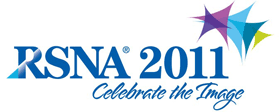
Abstract Archives of the RSNA, 2011
LL-HSS-MO3A
Simulation-based Analysis of the Mayo CT Trial and CT Lung Cancer Screening Outcomes
Scientific Informal (Poster) Presentations
Presented on November 28, 2011
Presented as part of LL-HSS-MO: Health Services, Policy, and Research
Emily Bao Tsai MD, Presenter: Nothing to Disclose
Shih-Jui Lin, Abstract Co-Author: Nothing to Disclose
Bronislava Sigal MD, Abstract Co-Author: Nothing to Disclose
Sylvia Katina Plevritis PhD, Abstract Co-Author: Nothing to Disclose
To simulate screening of high-risk patients for lung cancer with computed tomography (CT) through the use of a mathematical model in order to estimate the effectiveness of screening and to understand the impact of overdiagnosis.
A mathematical model of the natural history of lung cancer was developed containing estimated parameters based on the Surveillance, Epidemiology and End Results (SEER) cancer registry and externally validated against the control arm of the Mayo Lung Project. The model simulates lung cancer as a progressive disease with distinct time points at which the disease can be detected and cured. Based on published protocols, screening, follow-up and treatment components were implemented into the model, and the screening component of the simulation model was validated against data from the Mayo CT screening trial. To simulate the study, a population of high-risk patients underwent five annual screening examinations. The long-term outcomes were compared to outcomes in the case of clinical detection only.
Annual CT screening for five years yielded a 38% increase in detected lung cancer cases over the five years when compared to the scenario of no screening or clinical detection only. Twenty-three percent of the cancers detected by screening over the first five years would not have been diagnosed without screening. Five years after study entry, a 33% reduction in lung cancer-specific mortality was observed, and after 10 years, a 31% mortality reduction was observed.
CT screening yields an increase in the number of cancers detected when compared to clinical detection, and screening has a positive effect on lung cancer-specific mortality. However, overdiagnosis may reduce the overall effectiveness of screening.
The potential benefits of screening for lung cancer with CT must be weighed carefully with the risks.
Tsai, E,
Lin, S,
Sigal, B,
Plevritis, S,
Simulation-based Analysis of the Mayo CT Trial and CT Lung Cancer Screening Outcomes. Radiological Society of North America 2011 Scientific Assembly and Annual Meeting, November 26 - December 2, 2011 ,Chicago IL.
http://archive.rsna.org/2011/11001067.html

